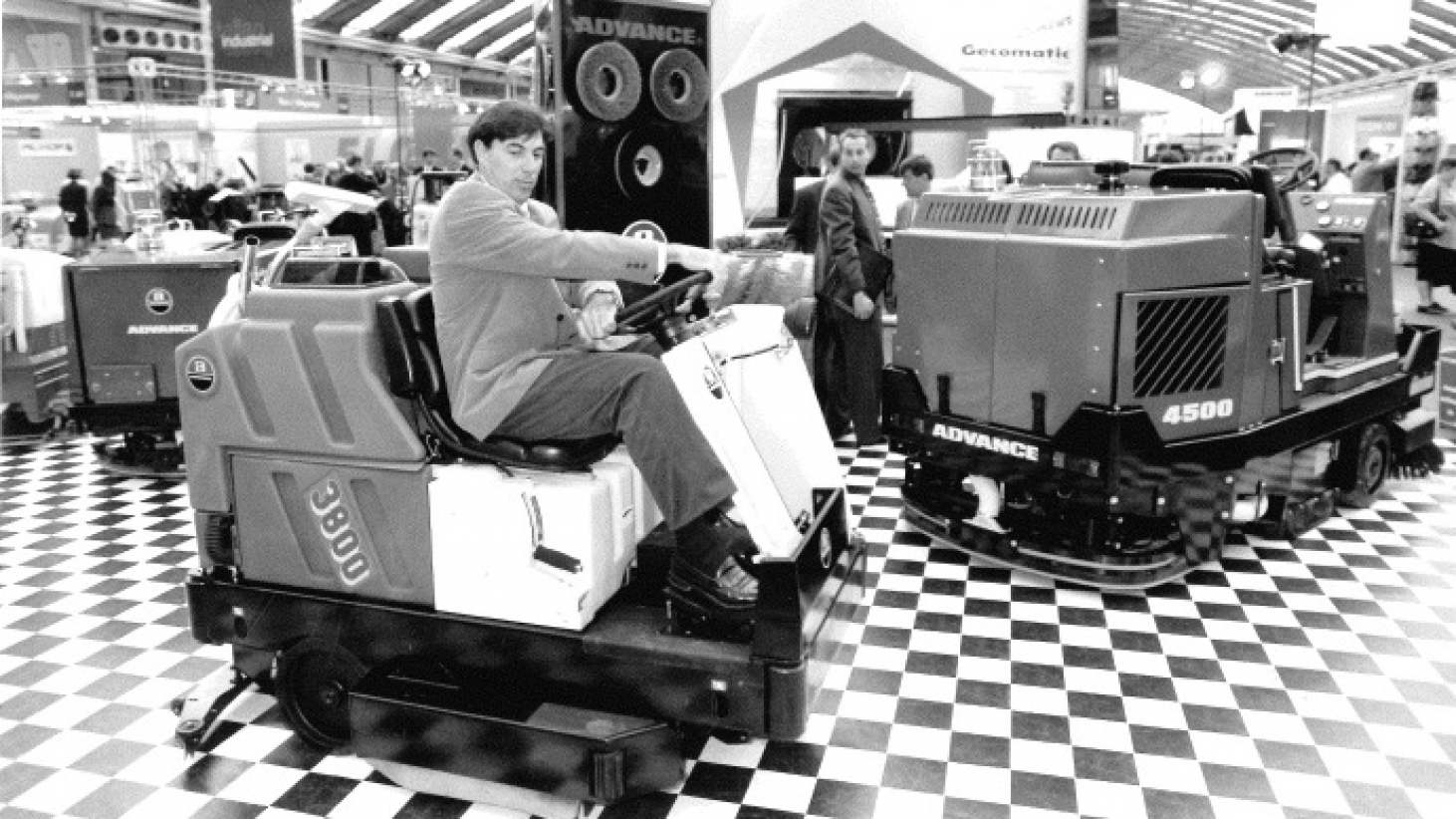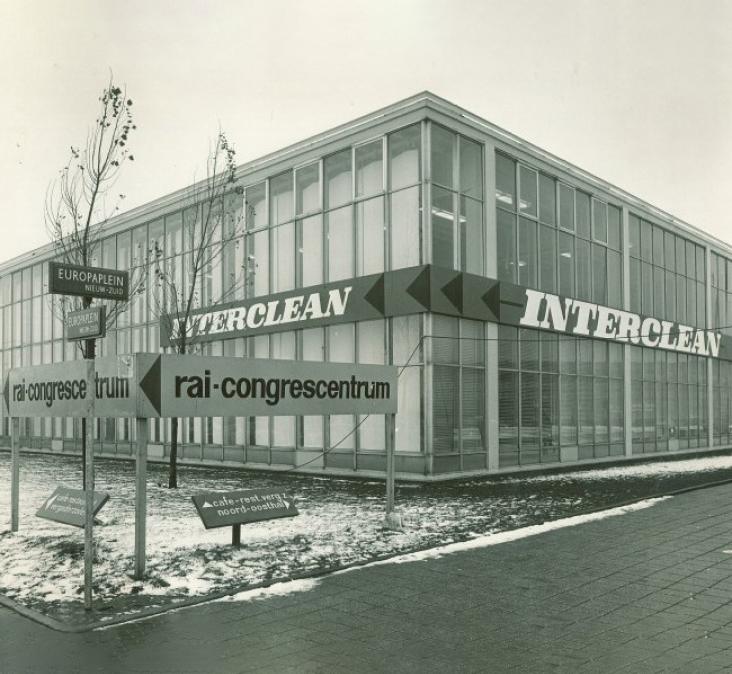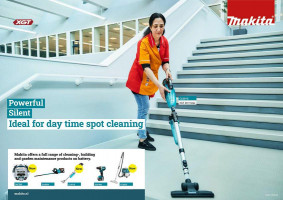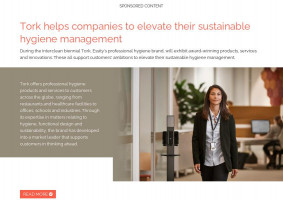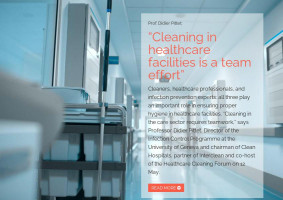The history of Interclean: the origins of cleaning worldwide
Interclean Amsterdam will soon open its doors again for cleaning professionals from all across the globe. The international cleaning industry found its origins here in 1967. Since then, Interclean has developed into the world’s largest cleaning trade fair. Diving into history.
Read more
In all these years, the trade fair has attracted more than half a million visitors who are specifically interested in cleaning. Especially since the 1980s, there have been many interested visitors from abroad. The surface area of stands increased from 2,000 square metres in 1967 to no less than 70,000 square metres across 13 exhibition halls at the last physical exhibition in 2018.
More than 600 suppliers and distributors will be present this year and around 35,000 visitors are expected to come from all over the world to RAI Amsterdam for the exhibition.
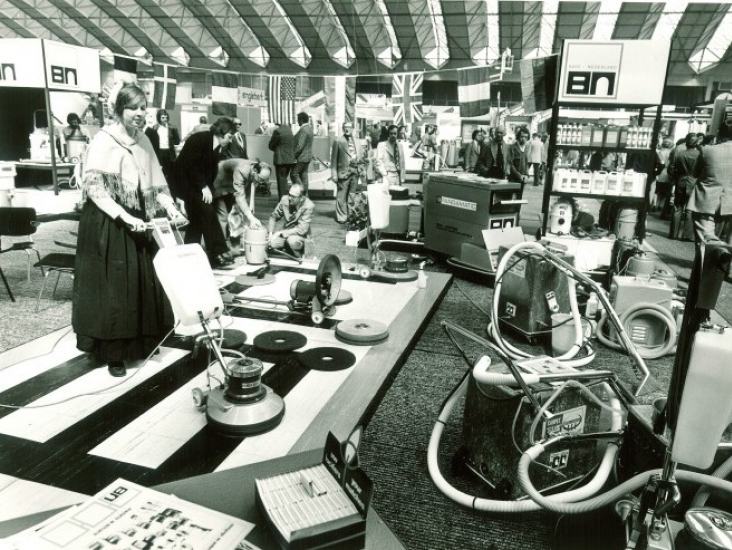
How did it all begin?
It began in the mid-1960s, when the Building Trade Fair was organised in Utrecht where – in the absence of a specific cleaning exhibition – suppliers of floor cleaning machines such as Taski, Wetrok, Clarke and Columbus-Dixon also exhibited in the midst of the building materials. That was not a coincidence because, in those days, mechanical floor cleaning was really making headway in the cleaning industry. But, exhibiting between all the building industry elements, these exhibitors remained the odd ones out.
So, Mr Van de Pasch at Invas suggested to RAI Amsterdam that a specific cleaning exhibition should be organised every year. This resulted in the first Interclean in December 1967. Among the first 57 exhibitors in 1967 there were eight companies who are still participating nowadays in the professional cleaning exhibition: Alpheios, Ewepo (currently part of Groveko), Flash, Hago, Hijman, Metternich/Spectro, Nilfisk and Vendor. In the beginning, Interclean was an annual event: from 1967 to 1969, with the number of visitors never exceeding 3,000.
Internationalisation got going
That annual frequency appeared to be too expensive for exhibitors so it was followed by two-yearly events until 1987, all with Jos van den Berg as the exhibition manager. At that time the number of visitors skyrocketed. The RAI exceeded the 20,000 threshold and internationalisation also got going. During the tenth Interclean – in 1983 – all records were broken with 23,000 visitors and a net exhibition area of 22,000 square metres. In 2018, the number of visitors reached just below 35,000. There are generally about 6,000 visitors from the Netherlands every two years. Rob den Hertog, former exhibition manager: “Those 6,000 visitors made us the largest cleaning exhibition in the Benelux.”

Keywords for that international success in the Netherlands: good (flight) connections, commercial spirit, language skills as well as ‘Amsterdam stands for fun’. “Here, the cleaning industry’s infrastructure is extremely well organised. Training courses, trade associations and trade unions, research and media are of a high standard. In brief: if you want to know something about the industry in the Netherlands, there are ample sources readily available. Secondly, in the Netherlands things are cleaned very well. We are a leading country. Thirdly, the Netherlands is a distributing country. Most of the suppliers of cleaning agents and equipment come from North America, Asia, Germany, Great Britain and Italy. If you look at the world as a manufacturer, we hold a neutral position. So you don't need to exhibit your wares and machinery in the very heartland here.” Merging (and demerging) with ISSA.
As Dutch people it generally helps that we speak English and sometimes even some French and German, and we have excellent infrastructure at our disposal with Schiphol and the train connections. “Manufacturers who have a choice and a limited budget due to the crisis, will spend their money where the most visitors can be attracted. And that is with us, in Amsterdam.”
In the late 1990s, the name was extended to ISSA/Interclean, because RAI Amsterdam started collaborating with ISSA on trade fairs in the United States and Central America. That is a global clustering of 6,100 manufacturers, suppliers and users of professional cleaning products. At the end of 2017, both parties went their separate ways because of “differing opinions”. As a result, it simply became Interclean again.

Cleaning companies dropped out as exhibitors
At the turn of the century, the trade fair in Amsterdam changed because major Dutch cleaning companies had dropped out since 1996. Due to the increasing number of international visitors, it became less and less worthwhile for them to participate with a stand. Companies like Cemsto, Gom, Hago, Asito, CSU, VLS and Lavold encouraged visits by many hundreds of clients and employees, who promptly stayed away when these companies ceased being exhibitors since 1998. Nowadays, we see these cleaning companies as visitors to the exhibition, so they themselves can discover new developments and initiatives.
Input from abroad
Dutch trading companies who do not export are no longer present as exhibitors at the exhibition. As a result, input from abroad has increased even more percentage-wise. Consequently, only about 8% of the exhibitors are now of Dutch origin. These are the major Dutch trading companies and manufacturers who have developed internationally, in addition to their domestic concerns.
Interclean’s Dutch character may be diminishing, but this is compensated to the full with a sense of pride of the facilitating role played by the Dutch cleaning industry at Interclean’s inception. Finally, Den Hertog said: “An industry that still globally leads with management systems, training courses and contributions to international conventions.”
Where does the name Interclean come from?
The name Interclean has existed since 1964. That was three years before the now well-known cleaning trade fair was organised for the first time in Amsterdam. In 1964, Mr De Vlugt from Amsterdam had a financial interest in a small cleaning company that yielded an inadequate return. He then decided to take over the company entirely and to start afresh under a new company name.
At first he thought of the name Ariston: derived from the Greek god Aristos, who symbolises beauty, cleanliness and hygiene. But Ariston was not associated enough with cleaning services. Then, over a couple of drinks, he brainstormed with his friend Jan Apetz – a writer and cartoonist – about a better name, they came up with: Interclean.
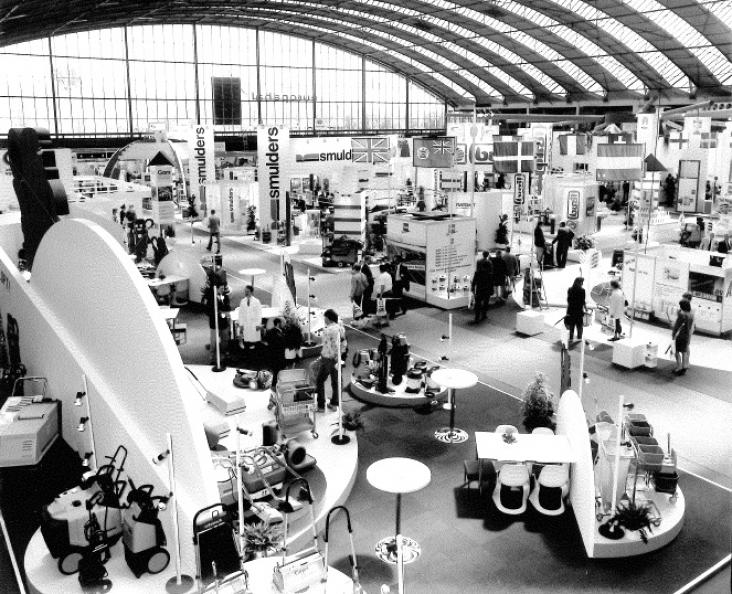
Three years after registering the name Interclean, De Vlugt, the owner and managing director, received a call from a member of the RAI management. This organisation had – without verifying the self-determined name – devised a cleaning trade fair with the internationally appealing name Interclean and had already had all the necessary printed matter produced. Was this a problem? No, not really. Mr Paulen and Mr De Vlugt appeared to get on very well together and RAI Amsterdam was pleased to be lucky enough that the owner of the company name did not fuss about it. De Vlugt gave his consent to leave the name of the trade fair in place.
